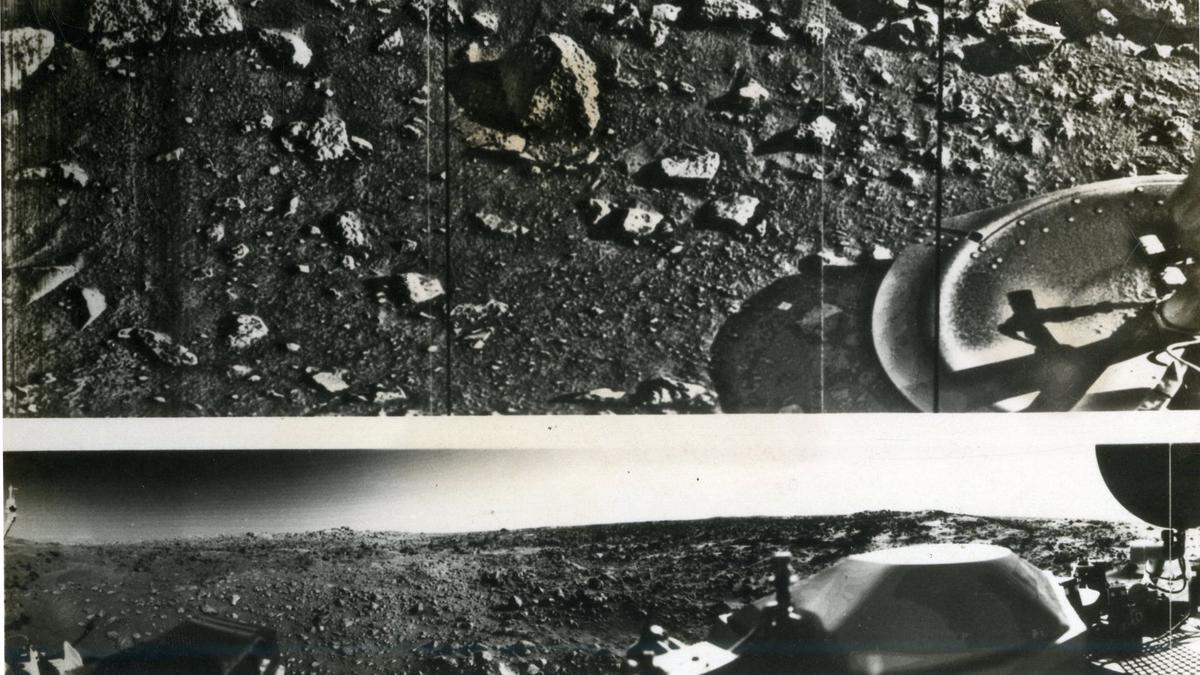Science
NASA’s Viking Missions: Pioneering Mars Exploration in the 1970s

The Viking 1 and Viking 2 missions, launched by NASA in the mid-1970s, marked a significant milestone in the exploration of Mars. These missions aimed to investigate the planet for signs of life and gather vital data about its surface and atmosphere. With their successful landings, the Viking spacecraft not only advanced scientific understanding but also ignited public interest in the mysteries of the red planet.
The journey began with the Mariner 9 mission, which entered orbit around Mars in 1971. Its images revealed surface features suggesting past liquid water, prompting the need for landers equipped to analyze Martian soil and atmosphere. Budget constraints altered initial plans for a long-duration lander, leading to the development of two orbiters and two landers with a shorter operational timeline.
The Viking project, managed by NASA’s Langley Research Center in Hampton, Virginia, launched Viking 1 from Cape Canaveral, Florida, on August 20, 1975. As Viking 1 embarked on its 304-day journey, Viking 2 followed suit on September 9, beginning its 320-day voyage to Mars.
Historic Landings and Discoveries
On June 19, 1976, Viking 1 entered an elliptical orbit around Mars, with mission planners aiming for a landing on July 4. This date held significance as it coincided with the U.S. bicentennial. However, the original landing site was found to be too rough, necessitating a two-week delay to select a safer location. On July 20, Viking 1 successfully separated from its orbiter and landed in the Chryse Planitia region, coinciding with another historic date: the anniversary of the Apollo 11 moon landing in 1969.
Viking 2 followed by entering orbit on July 25 and landing in Utopia Planitia on September 3. The landers, weighing 978 kg, began transmitting data and images immediately after touchdown, providing high-resolution photographs and panoramic views of their surroundings.
The Viking 1 lander captured a 300-degree panorama, revealing the Martian landscape and showcasing the complexity of its environment. Although the seismometer failed, other instruments recorded critical data, including temperature fluctuations ranging from minus 86 degrees Celsius before dawn to minus 33 degrees Celsius in the afternoon. Notably, on July 28, Viking 1 scooped its first soil samples, leading to insights into the planet’s geology and atmosphere.
Lasting Impact and Legacy
Both Viking missions were initially intended to last for 90 days, but they far exceeded expectations. The orbiters continued their missions until August 17, 1980, for Viking 1 and July 24, 1978, for Viking 2. The landers contributed to the understanding of Martian weather patterns until November 11, 1982, for Viking 1 and April 12, 1980, for Viking 2.
Through these missions, the Viking landers returned approximately 4,500 images from the Martian surface, enhancing our understanding of its cold, dry atmosphere primarily composed of carbon dioxide. The data indicated the presence of ancient riverbeds and evidence of past flooding, reshaping scientific theories about Mars.
The Thomas A. Mutch Memorial Station now honors the legacy of the project’s imaging team leader, who passed away in 1980. Viking 1 set a record for the longest operational spacecraft on Mars, functioning for 2,307 Earth days or 2,245 Martian sols, until a human error interrupted communication in 1982.
These pioneering missions laid the groundwork for future Mars exploration, proving that while the search for life on Mars did not yield direct results, the scientific discoveries were invaluable. The Viking missions remain a testament to humanity’s quest for knowledge and understanding of our neighboring planet.
-

 World5 months ago
World5 months agoSBI Announces QIP Floor Price at ₹811.05 Per Share
-

 Lifestyle5 months ago
Lifestyle5 months agoCept Unveils ₹3.1 Crore Urban Mobility Plan for Sustainable Growth
-

 Science4 months ago
Science4 months agoNew Blood Group Discovered in South Indian Woman at Rotary Centre
-

 World5 months ago
World5 months agoTorrential Rains Cause Flash Flooding in New York and New Jersey
-

 Top Stories5 months ago
Top Stories5 months agoKonkani Cultural Organisation to Host Pearl Jubilee in Abu Dhabi
-

 Sports4 months ago
Sports4 months agoBroad Advocates for Bowling Change Ahead of Final Test Against India
-

 Science5 months ago
Science5 months agoNothing Headphone 1 Review: A Bold Contender in Audio Design
-

 Top Stories5 months ago
Top Stories5 months agoAir India Crash Investigation Highlights Boeing Fuel Switch Concerns
-

 Business5 months ago
Business5 months agoIndian Stock Market Rebounds: Sensex and Nifty Rise After Four-Day Decline
-

 Sports4 months ago
Sports4 months agoCristian Totti Retires at 19: Pressure of Fame Takes Toll
-

 Politics5 months ago
Politics5 months agoAbandoned Doberman Finds New Home After Journey to Prague
-

 Top Stories5 months ago
Top Stories5 months agoPatna Bank Manager Abhishek Varun Found Dead in Well









